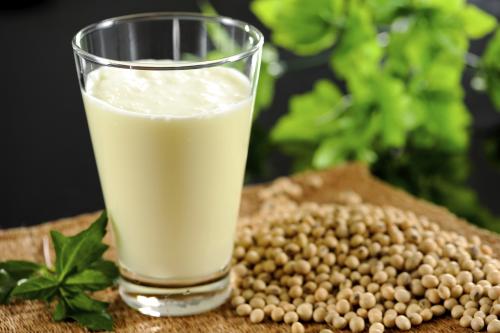

Soybeans, isoflavones, and a balanced healthy figure
According to research undertaken by the Vietnam Institute of Nutrition in 2005 covering 7600 families in all 64 provinces, the number of overweight and obese people is rising quickly. The survey found that 16.8% of adult was overweight, rising to 30.1% in women of child-bearing age.
Why are women overweight?
Being overweight is the result of an overabundance of fat in the body and is considered a threat to overall health. Weight gain occurs when energy intake is not matched with energy burn and extra calories are stored in layers under the skin. Diets most commonly associated with being overweight are marked with high calorie counts, high fat levels and large amounts of sugar; these in turn are contrasted with little exercise. Changes in the female hormone beginning around age 40 can also lead to weight gain.
Hormone imbalances during the onset of menopause, especially regarding estrogen, can lead to weight gain in certain areas. Known as the female hormone, estrogen is used to regulate certain processes in the female reproductive system, including the ovaries. It can also stimulate the storing of fat in the thighs and buttocks (also known as gynoid fat or having a ‘pear shaped’ figure) as a means of keeping fat away from the belly area. The effects of estrogen are strongest during teenage years, and well as the years surrounding childbirth. As age increases, the effects of estrogen slow. When women reach menopause, the amount of estrogen produced by the body decreases significantly, making it easier for fat to collect around the stomach and midsection. It is during this time that many women become overweight.
Treating the problem with weight loss drugs or hormone replacement therapy can have negative effects for health. The US Women’s Health Initiative and the National Institute of Health conducted a study of 16,000 women who had tried such methods and found there to be an increased risk of heart disease, stroke, high blood pressure and breast cancer.
Isoflavones found in soy: a better choice for a healthy figure.
Soy-based foods and drinks not only represent good nutritional value but also supply the body with certain compounds that have seemingly magical properties. Of the phytochemical group, isoflavones have elicited the most attention. Isoflavones are often called ‘estrogen from plant’ because they possess a chemical structure similar to that of estrogen produced in the body. As such, they can help the body maintain an ideal weight and are beneficial to health. Recent studies have shown a diet rich in soy proteins and isoflavones can offset lowering estrogen hormone.
A study published in July 2003 in the Journal of the North American Menopause Society undertaken by researchers at the University of Iowa showed isoflavones had a noticeably positive effect in the maintenance of a healthy figure. Taking part in the study were 69 women entering menopause. They were divided into three groups, with the test groups administered 40 g of soy protein rich in isoflavones for 24 weeks. Results showed women in the test groups were able to maintain healthier figures than those in the control group, highlighting the effect of isoflavones regarding keeping fat away from the stomach.
Isoflavones naturally derived from soybeans are therefore an excellent choice when it comes to maintaining a healthy weight and balanced figure, with fat distributed more attractively around the body, including in the thighs and buttocks. This also avoids risks from the use of weight loss drugs and hormone replacement therapy. Isoflavones are a natural solution for those seeking an attractive figure and good health.
Dr. Thi Ngoc Diep
Director, Ho Chi Minh City Centre for Nutrition

